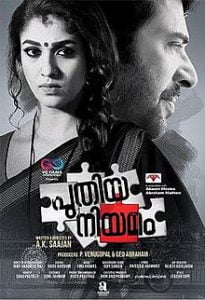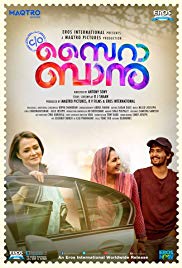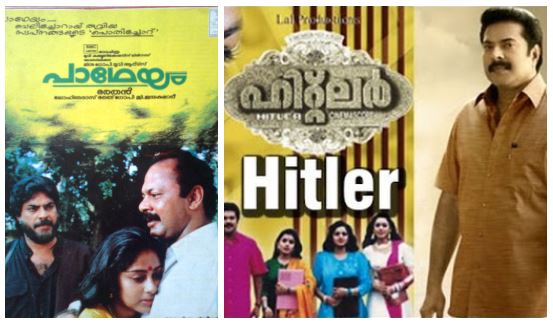Posted by Isaac K. Oommen
This article comes with a trigger warning in that it discusses rape-related film scenes. It comes with a (much smaller in perspective) spoiler warning as well.
***
Rape in films is a dangerous plot device. Playing with systems of power, writers and directors use rape scenes to underline the villainy of the antagonist, or bring sympathy for the protagonist – the pivotal scene from the French film Irreversible stands as an example of the former, while the prison rape scene from American History X is an instance of the latter.
Due to the sheer power that these scenes have, they can help shape archetypes such as the redeemed sinner or the fallen saint. Malayalam films over time, particularly the 80s and 90s, have had an effect of reinforcing patriarchy and using rape scenes to tantalise rather than underscoring the wrongness of the act (by no means is Malayalam film alone in South Asia in doing this. Hindi and Tamil films from the same periods are rife with the same issues. This article focuses on Malaylam cinema since it is less examined in English and since the author is Keralite).

Image Source: Google
The very first film of any language in which this writer remembers seeing a rape scene was 1993’s Padheyam with Mammootty in the lead role. In it, a celebrated poet named Chandradas finds his daughter who had been kept from him by her mother. A flashback shows his relationship with his daughter’s mother Anitha, whom he married as a warped act of justice after raping. The rape is explained away as happening because Anitha was wearing something revealing while sheltering at Chandradas’ house during a storm.
Afterwards, he asks her why she did not resist him enough. Since Anitha does not reply, the message conveyed is that she somewhat wanted the act. Though the couple separate painfully so that the audience sees that there is no happy ending to this relationship, the rape scene and the admonition by the man to the woman he raped is the crux of the film.
https://www.youtube.com/watch?v=RNSi9IWv7qU&t=3618&authuser=1
The usual trope in the case of rape is for the (male) protagonist to avenge the act. The audience gets to see macho justice meted out for ruining family (male) honour, which is embodied by the raped woman. Hence this justice is meted out even if the survivor is dead. 2006’s Chinthamani Kolacase is a good example, in which a criminal defence attorney spends his spare time gruesomely killing the very rapists and killers he defends in court.
Though murder is the usual form of vengeance, Hitler (1996), which also stars Mammootty, takes another warped approach. Its protagonist Madhavankutty spends his time keeping men from getting near his five sisters (Arya Prakash has an in-depth examination of this relationship). One of the sisters, following a similar setup to Padheyam, is raped by her professor. When Madhavankutty confronts the professor, the latter uses the familiar excuse that the woman did not put up much resistance. A marriage between the rapist and survivor is thought up as the solution.
https://www.youtube.com/watch?v=U_Tuj-0CH3Y&t=4611&authuser=1
The above cases make what is less obvious in conventional macho rape-avenging films plain – that such forms of violence on women are to be managed in some way, through marriage if not through vengeful murder or the suicide of the survivor.
Valuing male-centred family honour above the life of a woman is one ‘cinema’ sin. The three fixes to said broken honour add to the centring of male ego. The final and worst issue comes about from this very centring as well.
Just as the rape scene centres male family honour, it also often takes the perspective of the rapist rather than the survivor. The creations of male directors and writers, these scenes are almost always shot from the point of view of male rapists, thereby making said scenes titillating and tantalising. Rather than focusing on the power play and horror of the act, the scenes instead focus on what is left out in the rest of the film due to standards and censors – bared skin or disrobement.
Malayalam films over time, particularly the 80s and 90s using rape scenes to tantalise rather than underscoring the wrongness of the act.
Directors like Joshiy and Vinayan are famous for films laden with scenes that in some way depict the molesting of a woman by a man. Whether it is the directors’ apathy as men or a conscious want to make these scenes titillating to male audiences, the results are telling. A simple online search shows lists made by film fans of “favourite” and “best” rape scenes. Such a revelation is jarring, but also shows that these scenes have been interpreted often as titillating rather than horrific.
Though it is hard to show causation between films and real life, recent issues within the industry that created these films mirror these scenes. The first is that of the casting couch revelations, in which several actresses said that they were asked to trade sex with directors and/or lead actors in exchange for roles – this scandal took Mollywood by storm in 2017.
In the same year, actor Dileep was unveiled as the man behind the orchestrated molestation of an actress, which was filmed and used as blackmail (Dileep’s art imitating life can be seen in 2002’s Meesa Madhavan, in which he watches the sleeping heroine and professes the want to molest her). Perhaps the crudest cut was made by the Association of Malayalam Movie Artists (AMMA) which went on the defensive about the casting couch scandal and readily welcomed Dileep back into its fold after his one year in jail. AMMA is of course run by a small set of powerful industry men that include Mamooty and Dileep.
Also read: The Underlying Sexism In The Media Reportage Of The Malayalam Actor’s Rape Case
AMMA’s defensiveness on the casting couch issue is telling from the same industry that has three simple fixes (murder, suicide, or marriage) to rape on-screen. Its treatment of Dileep versus the survivor reflects that of directors of rape scenes, where they empathise with the male perpetrator over the female survivor.
Surely with the above issues unmasking misogyny in Mollywood, there has been some change? Certainly there do exist new(er) women directors such as Anjali Menon, who treat women on-screen differently and three-dimensionally, as evidenced by her pivotal Bangalore Days (2014).
Rather than creating better rape scenes, Malayalam film makers are creating fuller female characters that are not just meant to be used by male leads.

Image Source: Wikipedia
However, when it comes to these rape scenes, there has been little progress. 2016’s Puthiya Niyamam showed fantastic promise since the survivor avenges herself on her rapists. However, at the end of the film it turns out that her husband played by Mammootty was the one secretly egging her on. The male is once again centred.
Mammootty’s 2017 The Great Father puts him again at the centre as he avenges his daughter who was harassed by a serial killer. Mammootty may seem to be particularly awful when it comes to patriarchy in film. However, he is used here to preserve continuity. The old-guard that controls AMMA, which includes him but also Mohanlal, Dileep, and others, all are involved in the awful takes on the rape scenes.
The solution to this issue is not so much in the scene as films as a whole. Malayali audiences were used to women characters that were treated as property – used, bargained, avenged – by males. Rather than creating better rape scenes, Malayalam film makers are creating fuller female characters that are not just meant to be used by male leads.
Films like 2007’s Naalu Pennungal (literally meaning “good women”) takes a look at women in different classes of society, including a sex worker and older single lady (Malayalam films’ examination of class is what makes them so unique. There is no film industry that does quite as well. 2005’s Bus Conductor, with the many-times aforementioned Mammootty in the lead role fighting a rich bus company owner who is also a cop, thereby making the latter both the bourgeoisie and the tool of said bourgeoisie, is brilliant).

Image Source: IMDb
If the film must be about rape, 22 Female Kottayam (2012) actually takes the perspective of the survivor as she seeks vengeance, without a male guardian angel like in Puthiya Niyamam. The return of older actresses like Manju Warrier in C/O Saira Banu and Shobhana in Thira also introduce diverse new female characters that are far more three-dimensional and therefore are ones with whom audiences empathise. Moreover, they centre women in the narrative.
It can be argued that this is not even such a new direction for Malaylam cinema since 1978’s Avalude Raavukal takes the perspective of a female sex worker. It is, however, becoming a more often-travelled direction, which is welcome news for women in cinema and viewers alike.
Also read: On Prithviraj’s Statement And The Long History Of Misogyny in Malayalam Cinema
Isaac K. Oommen is a college instructor, youth worker and media scholar of sorts that is also an avid film watcher. Other than Malayalam films, he loves Hindi, Tamil and Arabic cinema. He watches English films these days only if they star the Rock or Denzel Washington.
About the author(s)
Guest Writers are writers who occasionally write on FII.




